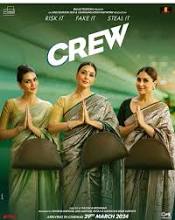Women in Filmmaking: Elephant in the room
“And the Oscar in the documentary short film category goes to…”

What followed was history. The Elephant Whisperers won the Academy Award. It led to many firsts- India’s first production to win and the first win by a debutant director. Kartiki Gonsalves and Guneet Monga, the ladies behind this phenomenon are commendable. Their inspiring and tenuous journey encompasses years of sweat and passion.
The Elephant Whisperers follows an indigenous couple named Boman and Bellie in South India. They devoted themselves to caring for orphaned baby elephants, Raghu and Ammu caught from Satyamangalam and Aiyur forests. After the forest department gave these two wild baby elephants to them, Bellie and Boman dedicated nine years of their life to nurturing and raising them.
Kartiki, the director grew up in the region of Ootti, a hill station in Karnataka, South India. Visiting forests and Bio-Reserves was an integral part of her upbringing. Her parents, and grandparents all are nature enthusiasts. It was during one such trip that Kartiki encountered Raghu, the young elephant on the roadside going with Boman. In her own words, “I was bemused, I had never seen a calf so young, and so I was drawn towards Raghu”. Boman asked her to accompany them to the pond. This simple and sweet gesture changed Kartiki’s life forever. She was awestruck and delighted to witness the loving relationship between man and animal. It is the purest form of love and trust. This led to frequent visits by Kartiki. Coming from the region, Kartiki had heard about many elephant deaths since childhood. Raghu’s mother also died because of electrocution.
Due to lingering drought, Raghu’s herd had to venture out of the forest in search of water. Climate change and deforestation have impacted the habitats of elephants. Only 35,000 to 40,000 Asiatic elephants are left in India. The situation is very grim. Kartiki wanted to create awareness about it. She was a wildlife photographer. She started as a documentary photographer, focusing on natural history and social documentation. Then she became a camera woman and now her journey of exploration involves capturing the diversity of cultures and tribes across the world. She wanted to focus on solutions to building awareness and responsibility towards environmental concerns while showcasing beautiful stories and instilling hope.

What Raghu, Ammu, Boman, and Bellie shared was a heavenly bond. Kartiki thought of presenting their story with pure heart and honesty. It provided a ray of hope, mutual respect, cooperation, and respect. She made a reel of one year of her hard work of profiling them. She showed the reel to Netflix, a giant streaming platform, who were instantly interested in the project. They introduced her to the producer, Guneet Monga. That is how these two ladies came together to make history.
What followed was permission from the forest department and the agencies concerned. After getting the requisites, Kartiki began her baby project. During this period, she captured the journey when Boman and Bellie fed, bathed, and took care of Ammu and Raghu. The 400+ hours of raw footage was crisply edited into a 41-minute documentary. Only the footage talking about their bond made it to the final cut. The breathtaking surrounding was highlighted by the enchanting music. It just elevates the film to greater heights. This beautiful documentary is available on Netflix. Thereafter, The Elephant Whisperers got shortlisted for Academy Awards, followed by a nomination and eventually a win in the Short Documentary Category 2023.
Both ladies are a combination of talent and intelligence in their respective fields. Producer Guneet has an illustrious career in producing some path-breaking and critically acclaimed movies. Having lost both of her parents in 2008, she was only 24 years old when Guneet came to Mumbai. She realized her knack for film production and started “Sikhiya Entertainment”, her production house in 2009. While filming ‘Once Upon A Time In Mumbai’, she met Anurag Kashyap and magic followed. The duo gave us beautiful films like “Gangs Of Wassepur, That Girl In Yellow Boots, Shaitan, etc”.
As a producer, she feels responsible for the money involved in movies and tries hard to protect her director’s dream. In 2013, She created her magnum opus ‘The Lunch Box’, India’s official entry to the Oscars. In July, Deepika Padukone and Guneet Monga became the only Indian women in history to be featured in Variety’s International Women Impact Report 2018. Later that year, Guneet became India’s first producer to join the Academy of Motion Pictures Arts and Sciences. Her deep understanding of the film market and Kartiki’s sensibilities gave us our first Oscar.
The Elephant Whisperers brought forth many issues which sparked debates like the role of indigenous communities, the scene of independent filmmaking in India, and the part of passion in success. Let’s discuss these:
Firstly, The Elephant Whisperers delightfully presents the indigenous people. Their love and respect for Mother Nature are combined with their ancient knowledge and wisdom. They enter the jungles barefoot as a mark of respect. They have lived in jungles for centuries and have been taking care of elephants. There are 20 such tribes in South India. Boman and Bellie belong to the Kattunayakan Tribe, who were originally hunter-gatherers. Some now specialize in areas of honey collection and elephant care. Through generations, they have inhabited the hearts of forests of western Ghat, South India. Their homeland now falls in Kerela, Tamil Nadu, and Karnataka. Their language is a mix of Malayalam, Tamil, and Kanada. The tribes team up with officials to protect their land.
After knowing that the documentary got the Oscars, Bellie was quick to thank the Veterinary Doctor, Guard, and Forest Ranger. Without their help, it would have been difficult for the couple to raise young elephants. The tribes regard elephants as a symbol of peace, mental strength, and power. They consider it their honor to service the mighty elephants. They only have respect and love for Mother Nature.

The success of the documentary has generated significant interest in independent filmmaking in India. Kartiki’s unique approach to filmmaking has inspired many to pursue their dreams.
Guneet says that it is the best time to be an independent filmmaker in India. There’s no limit to content. Everything is accessible, so just be patient and spread your wings.
However, many women filmmakers have found the industry to be highly patriarchal, with a pervasive culture of nepotism and a difficult-to-break glass ceiling that hinders the entry of talented women filmmakers. They believe that there are powerful entities that prevent the entry of women into the industry. Although not insurmountable, it is certainly challenging for women, as they often have to work harder to achieve success in the industry, much like in many other professions.
SheSight Magazine reached out to a group of women to gather their insights on women and what factors contribute to their achievements. Here is a compilation of their responses.
Sakshi Bhalla, a viewer of the film, expressed her admiration for the simple yet powerful storytelling of the documentary. She felt that the film showed the beauty of life and the importance of giving love and compassion, particularly towards animals. She also compared the love shared between Bomman and Belli, the two caretakers of the elephants, to an episode of “Modern Love,” emphasizing the relatability and universality of the themes presented.
Manju Malathy was touched by the depiction of the bond between the human caretakers and the baby elephants and felt that the film effectively conveyed the emotional agony experienced by the caretakers when they had to send the elephants away to other caretakers. However, she also noted that the film industry remains a challenging field for women, who she believes can replicate emotions better than men.
Sandhya Naren acknowledged the male-dominated nature of the film industry and the challenges faced by women trying to break into the field. She emphasized that without connections, it can be difficult for women to succeed in the industry.
Dr. Abha Pimprikar highlighted the importance of passion, patience, and perseverance for success in any field, and stressed the need for support, regardless of gender. She also noted the difficulty of shooting a film in a natural habitat, such as the setting of The Elephant Whisperers.
Anju Nanda Kumar emphasized the need for more women storytellers to offer their unique perspectives and portray the real side of women that has often been overlooked in storytelling. She also suggested that workshops and fellowships could help support women’s talents and offer global exposure to local stories.
The film industry is known for its glamour, drama, and powerful storytelling. However, the Indian film industry, like many other industries, is plagued by deep-rooted patriarchy. SheSight magazine brings attention to the issue of patriarchy in Indian culture. This problem is so deeply ingrained that some women may not even realize they are not just contributing to it but also perpetuating it to the next generation.
In India, getting married at an early age is still the norm, and societal expectations often limit women’s career choices. Despite this, there are families like Kartiki’s who support their daughter’s dreams. Kartiki pursued her passion for wildlife photography and spent six years creating the award-winning film Elephant Whisperers, thanks to her family’s support and encouragement. Kartiki’s journey is a shining example of what girls can achieve when their families support their dreams and don’t limit them to traditional roles of kitchen and kids.
The Indian film industry is still male-dominated, and women are vastly underrepresented as producers and directors. Women actresses are often portrayed in stereotypical roles, and women characters with substance and prominence are rare. The industry is often led by certain families and power centers, making it challenging for women to break into mainstream filmmaking.
Women’s stories are often only produced by female directors and producers, highlighting the need for more women in these executive roles. Female filmmakers tend to produce more realistic, gentler movies, unlike their male counterparts who focus on guns, violence, terrorism, rapes, and unrealistic superhero saving-the-world storylines. In a sense, the victory of Elephant Whisperers shines brighter than that of the predominantly male-oriented RRR.
The film industry’s patriarchal nature is evident in the obstacles that women filmmakers face. Big producers are often unwilling to fund women filmmakers, and a glass ceiling prevents talented women storytellers from entering the industry. A clan-like culture also contributes to these barriers, preventing young talents from entering the industry, especially women. Casting couches has been a prevalent issue in the industry, with women often being afraid to enter the industry due to the lack of a safe workplace environment.
Although POSH rules have recently become applicable to the film industry, many female filmmakers end up becoming independent filmmakers due to the obstacles they face. It is difficult for a woman from an ordinary middle-class background to tell her parents that she wants to be a filmmaker, let alone travel widely or come home at midnight with her male crew members. The barriers women face in the industry are familial, cultural, societal, and industry-wide, making it challenging for them to break into mainstream filmmaking.
The lack of representation of women celebrity filmmakers and directors in the Indian film industry is concerning, and there is a need for more women to enter the industry and break these barriers. SheSight strongly feels that more representation of women in leadership roles is crucial to creating a balanced industry with stories of nature, nurture, and life, highlighting powerful women’s stories and leaders.
Hollywood is not much different from the Indian film industry, but there are many women filmmakers, not just independent but also mainstream filmmakers. For example, The Woman King, a recent mainstream hit, was made by a crew of black women. However, women are still often relegated to stereotypical roles in the film industry, such as costume designers, choreographers, or assistant directors. The lack of women music directors is also a concern, raising questions about whether women can compose music at all!
It is time for the Indian film industry to break down these barriers and create more opportunities for women to become filmmakers, producers, and directors. It is necessary to support women’s dreams and not limit them to traditional societal norms. More importantly, it is time to shatter the glass ceiling and pave the way for women to enter the film industry without fear.
To create more opportunities for women in the Indian film industry, the industry must take a multi-pronged approach.
Firstly, it is essential to create more women-centric films that tell diverse stories and are not limited to stereotypical roles. This will not only provide more opportunities for women actors but also for women writers, directors, and producers. Currently, there is a dearth of women in these roles, and by promoting and encouraging more women to take up these positions, the industry can ensure that more diverse stories are told, and women’s perspectives are represented on screen.
Secondly, the industry must work towards creating a safe and respectful work environment for women. The #MeToo movement in India exposed the rampant sexual harassment and abuse faced by women in the industry. It is imperative that the industry takes steps to address this issue and creates policies and mechanisms to ensure the safety and well-being of women. This will not only make the industry a more inclusive space but also attract more women to pursue careers in the film industry.
Thirdly, the industry must provide equal pay and opportunities for women. Women actors are often paid significantly less than their male counterparts, and there is a prevalent gender pay gap in the industry. It is crucial that women are paid the same as men for doing the same job, and their contributions are recognized and valued. Additionally, the industry must provide equal opportunities for women in terms of casting and career progression.
Fourthly, the industry must work towards promoting women-led films and ensuring that they receive equal distribution and promotion. Often, women-led films are not given the same level of promotion or distribution as their male-led counterparts, resulting in lower box office collections and limited visibility. By promoting and distributing women-led films on an equal footing, the industry can create a more level playing field for women.
Also, the industry must take steps to promote and encourage more women to take up technical roles such as cinematography, sound design, and editing. These roles have traditionally been dominated by men, and there is a need to create more opportunities for women in these areas. By promoting and encouraging more women to take up these roles, the industry can ensure that women’s perspectives are represented not just on screen but also behind the camera.
All in all, the industry must work towards creating more opportunities for women from marginalized communities, including Dalit women, Adivasi women, and women from other minority communities. These women face multiple barriers to entry into the industry and often have limited access to resources and opportunities. By creating targeted programs and initiatives to promote and support these women, the industry can ensure that their voices are heard and their perspectives represented on screen.
To be successful in any field, passion along with a little craziness is vital. One should have women’s faith in their ability to turn dreams into reality. This comes with knowledge and experience. So yes, dream big and stay put.
Lastly, Guneet’s special message for young girls: “Don’t wait for anybody. Just Get Started. There Is Nobody To Give You Permission. You Don’t Need To Create A Seat On The Table. Create Your Own Table And Sit On It”.
SheSight Editorial Board with additional inputs from storyteller and SheSight’s contributing writer Nidhi Raj






